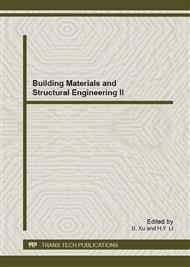p.128
p.132
p.138
p.142
p.146
p.150
p.155
p.159
p.164
Experimental Investigation on Composite Seismic Isolation System
Abstract:
The objective of the present work is to propose a new composite seismic isolation system device based on the cable-sliding friction aseismic bearing (CSFAB). Multi-chip steel spiral spring (MSSS) are characterized by unique mechanical properties due to elastic recovery capability. An isolation bearing system based on a MSSS elastic effect is intended to provide recovery properties to reduce or eliminate the residual deformations. The device concept is based on two separate systems, one to transmit the vertical load and to act as a lateral restrainer at meantime, the other contributes to the automatic reset functions in the system. This article presents in detail the mechanical components of the innovative device focusing on its main properties. The load-deformation curve established in this paper is verified to be efficient in describing the mechanical characteristics of the device through experiment. The results could provide reference for study and application of the new composite seismic isolation system.
Info:
Periodical:
Pages:
146-149
Citation:
Online since:
August 2013
Authors:
Price:
Сopyright:
© 2013 Trans Tech Publications Ltd. All Rights Reserved
Share:
Citation:


